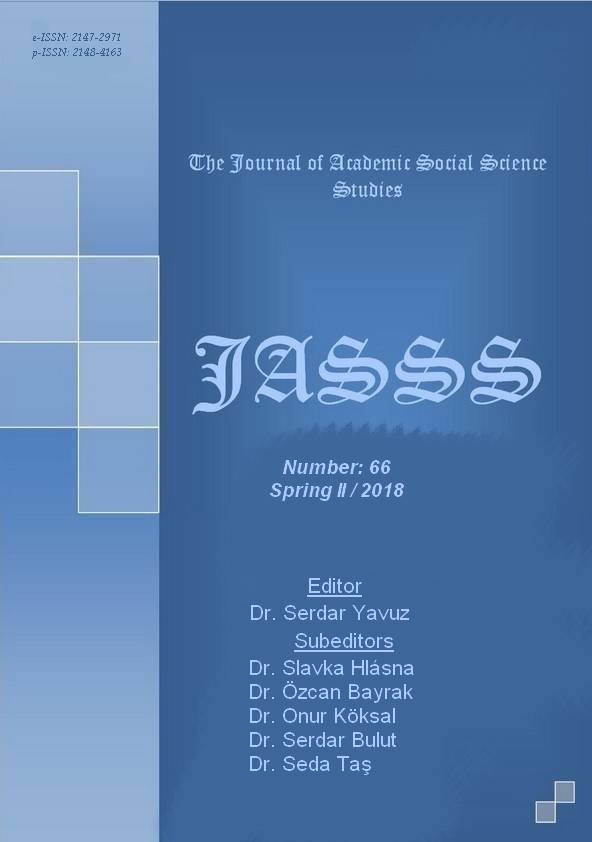HİCRİ İKİNCİ ASIRDAKİ İLMÎ VE FİKRÎ TARTIŞMALARIN REBÎ’ B. HABÎB’İN (Ö.175/ 792) EL-CÂMİU’S-SAHÎH ADLI ESERİNE YANSIMASI
Author :
Abstract
Muhaddisler öncelikli olarak Hz. Peygamber’in sünnetini tespit etmek, kayıt altına almak ve onu sonraki nesillere aktarmak için hicrî ikinci asırda yoğun bir tedvin ve tasnif faaliyetinde bulunmuşlardır. Bununla beraber hicrî birinci asırdan itibaren daha çok itikadi konular toplumda tartışılmış ve bu tartışmalar doğal olarak telif edilen eserlere de yansımıştır. İbâdîlere göre hicri ikinci asra ait olan Rebî’in el-Câmiu’s-Sahîh adlı eserini muhteva açısından incelediğimizde Rebî’in bu eserle adeta İbâdiyye mezhebinin esaslarını oluşturmak isteğini söylememiz mümkündür. Çünkü eserde söz konusu dönemde tartışılan ilmî ve fikrî konularla ilgili nakledilen merviyâta baktığımızda Rebî’in genellikle İbâdîlerin görüşlerini destekleyen rivâyetlere öncelik verdiğini görmekteyiz. Rebi’in eserinde kebâir, imanın tanımı, Allah’ın sıfatları, rü’yetullah, şefaat, imâmet ve kader konularıyla ilgili nakledilen rivayetler ile İbâdiyye mezhebinin bu konudaki görüşleri birbirleriyle uyum halindedir. Hatta rü’yetullah, ve şefaat gibi konularda muhaliflerin görüşlerini destekleyen rivâyetlere hiç yer verilmediğini görmekteyiz. Bu da Rebi’in eserini telif ederken söz konusu dönemde tartışılan ilmi ve fikri problemler karşısında tarafsız kalmadığını ve kendi eserinde tedvin ettiği rivayetlerle söz konusu problemlere çözüm aradığını göstermektedir. Çalışmamız bir hadis kitabıyla sınırlı kalınmıştır. Kanaatimizce diğer hadis kaynakları da söz konusu dönemdeki ilmî ve fikrî tartışmalar açısından incelendiğinde benzer sonuçlar ortaya çıkacaktır. Bu da bizlere herhangi bir hadis mecmuasının özellikle tasnif edildiği dönemdeki ilmî, fikrî ve sosyo kültürel ortamdan bağımsız olarak ele alınmaması gerektiğini göstermektedir.
Keywords
Abstract
The muhaddiths, in the second century of hijrah, made huge compilation and classification works primarily to detect and record the Prophet’s sunnah as well as to transmit it to the next generations. However, from the first century onwards, more theological topics have been discussed in society, and these discussions have also been reflected on the works of that time. Examining Rabî’s work, titled al-Jâmi’ al-Sahîh which belongs to the second century according to Ibadîs, in terms of content it can be argued that Rabî’ aimes to form the principles of the Ibadiyyah sect by this work. Because when looking at the reports which are related to the scientific and intellectual issues discussed in the period, it is seen that Rabî’ usually gives priority to the reports, supporting the views of Ibâdîs. In Rabî's work, the reports related to the topics of great sins, the definition of faith, God's attributes, Ru’yat Allah (seeing God), intercession, imamah and fate are in harmony with the views of Ibadi sect. Even it is seen that the reports which support the views of the opponents such as ru’yat Allah and intercession are not included. This shows that while writing his work, Rabî’ did not remain neutral in the face of the scientific and intellectual problems and sought solutions to these problems with the reports he included in his work. Our work is limited to a hadith book. In our opinion, other hadith sources will have similar results when examined in terms of the scientific and intellectual discussions in the period. This shows us that any hadith corpus should not be studied independently of the scientific, intellectual and socio-cultural context of particularly its classification period.
